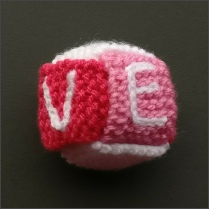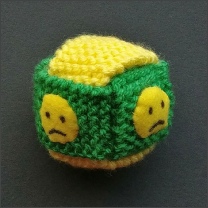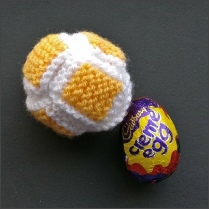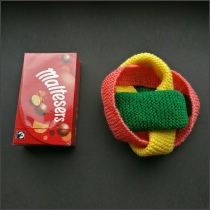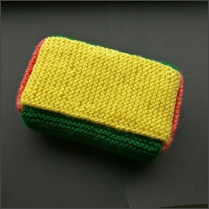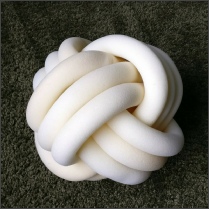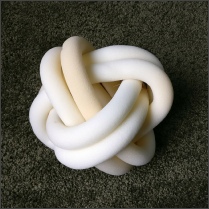Borromean Rings and Cubes
How do Borromean Rings turn into cubes? They can if you knit them.
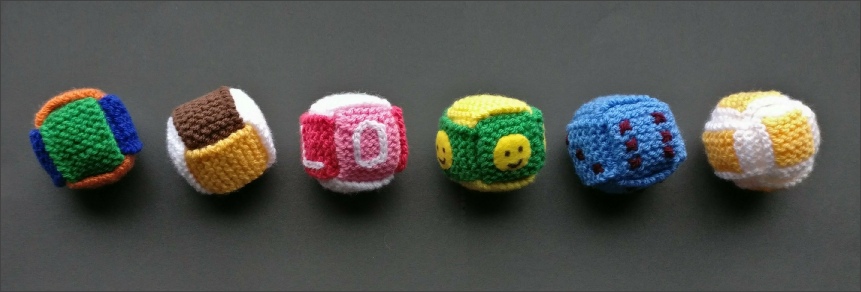
These are unstuffed cubes but they hold their shape surprisingly well. If you flatten them they can easily be reshaped. Because they are flexible but firm you could put a small gift inside.
The basic cube is made from three plain strips woven together. The strips are a short and stumpy version of Borromean Rings. If you take any one away the other two fall apart.
The pattern includes instructions for all the cubes in the photo above.
This idea can be extended to cover a box of any size. There is a lot of knitting involved as every surface is covered twice.
These were made from old sponge strips but could be made in many other ways
This pattern is available as a free Ravelry download
Borromean Baubles
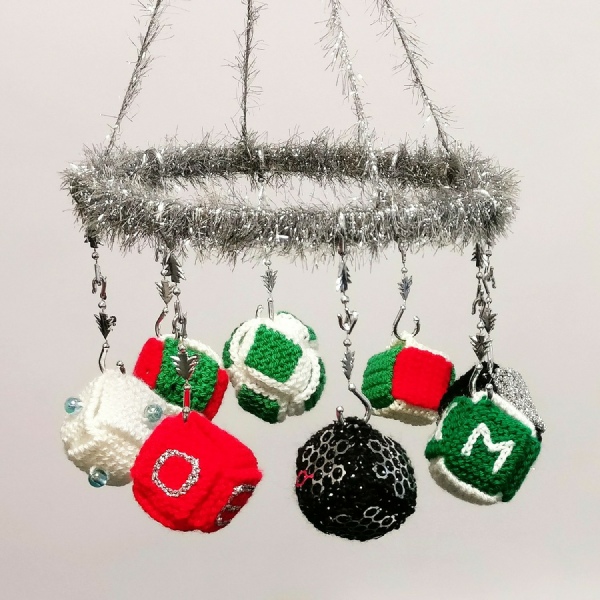
You can hang these baubles on your tree or just use them to hide a small gift. They are quick and easy to make from three small strips of knitting. The gift can be removed without damaging the bauble.
These are ideal for using up oddments of sparkly yarn. You only need 10 metres of yarn to knit one strip so a total of 30 metres should knit one bauble. You can add beads, or lettering, or any other decoration you fancy.
Make them in fancy eyelash-type yarn and the same amount of knitting produces a bauble that looks much fatter and rounder.
The strips can also be made in crochet but, because the strips are small and crochet stitches are large, they are not as versatile.
If you don’t want to knit or crochet your baubles there are also instructions for making them in stiff paper or card, and for beautiful translucent baubles made from plastic folders. These can still hide a gift but have to be taken apart to remove it. (They can be put back together again).
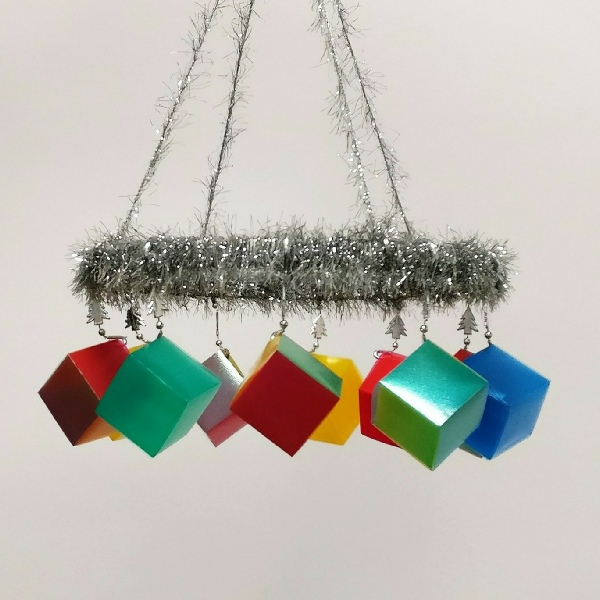
Woolly Thoughts, UK
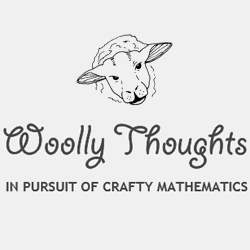
PROFILE
Mathematics through knitting and crochet.
Pat Ashforth and Steve Plummer, described as Mathekniticians.
Textile art is one of the vehicles they used for making Mathematics more accessible, during their teaching careers. They are now retired from formal teaching and their knitting and crochet has expanded beyond their mathematical beginnings.
Woolly Thoughts started, in 1994, as a book about making sweaters, jackets and other garments using mathematical methods.
Main Research Source
- Youtube Borromean Rings and Cubes(24/01/2018)
- Borromean cubes page
- Ravelry page- Cube thing(01/2018)
- Ravelry page - Borromean baubles(11/2018)

